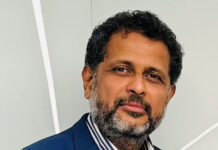Can you tell us more about yourself and your role at SmartStream?
I am a Swiss citizen, living in Dubai for the past fourteeen years. I have been with SmartStream for nineteen years, after time working in banking, to start at SmartStream in Professional Services as a consultant. After 5 years I moved to business development for Middle East & Africa and later moved into sales where I built our business in Africa. In 2019 I took over the strategic product management of three of our solutions, Corona, TLM Aurora and SmartStream AIR. My job is to ensure that we have the solutions in place that can solve our clients issues today, but more importantly tomorrow as well. Ensuring that we are moving the technology in the right direction and keeping up with the demands and challenges of the evolving Digital Banking space
What services are you offering banks to help them advance their digital transformation journeys?
We provide operational control to banks by providing solutions than ensure their data/process is running correctly and identify any breaks or anomalies as they occur in order to escalate, control and track their remediation. Our solutions bring together transactions from disparate systems and reconciles them. In this sense we provide the solutions that “tie up the loose ends” in banking operations, enabling transparency, audit and compliance to safeguard a bank’s operations.
How important is having AI and Machine Learning as part of your solutions?
AI is an important part of future technology and holds the promise reducing manual touchpoints in setting up or running a process. At SmartStream we use multiple AI’s at very strategic points, and this is the importance of identifying where the actual needs justify the deployment of AI. We use AI to enhance capabilities and to take over tasks that are still conducted manually. However, outside of daily operations we also see a great value in AI “institutionalising” knowledge and processes where they are currently dependent on individual employees’ knowledge and experience. This creates a more resilient backbone if our clients are exposed to the risk of employees changing their role or job, and the potential loss of know-how or having to reskill new employees.
How can financial service providers leverage SmartStream’s expertise to meet customers’ expectations and maintain a competitive edge in the next normal?
SmartStream has 40 years of experience in this space, and we have the knowledge and the solutions that cover the entire breadth and depth our customers require. Whether it is a solution to solve a specific problem or an enterprise-wide Operational Control center, we are equipped the right solution. With hundreds of clients globally and in every type of banking from global institutions, investment, commercial, private or retail banks, buy/sell side and corporates we provide them all with the controls that work, and which can be applied in a sustainable way, giving comprehensive configuration options whilst retaining the capability to upgrade seamlessly to newer versions. Our customers retain the competitive edge now being able upgrade to the newest platform and technology which addresses current and future challenges such a realtime, ISO 20022, native, high volumes, scalability, ease of use, adaptability, time to market, leveraging multiple AI capabilities, and they can choose how they wish to deploy, be it traditionally on-premises, private cloud, public cloud, on demand services or as a fully managed service.
The outbreak of the coronavirus has accelerated the evolution of the payments landscape. Which trends do you expect to dominate the digital payments industry to reflect customers’ evolving needs and requirements?
The pandemic has served as a catalyst to the digital client. Where some people had reservations about using digital payments and digital channels, everybody has now learnt to do this. This means there is a significant increase in Digital Payments such as contactless cards, on-line transactions etc., which also leads to a larger number of bank-to-bank payments in the settlement cycle. The digital Clients expectation is “instant” therefore banks not only need many solutions that scale to much higher volumes, but they also need to be able to handle realtime. Compounding this change is the move to ISO 20022 for payments which requires much larger data sets to be handled and opens new opportunities and capabilities to use this data. So, any solution in the Payments sector must be able to scale, provide realtime controls and facilitate open API’s for multiple integration points to other up and downstream solutions.
How do you envision digitalization in the banking and payments sectors, and if I were to sit down with you again six months from now do you think you will give me the same answer?
In six-months the problem will just be more pressing. These changes are unavoidable. However, in six- months we will be also talking about new application possibilities, utilizing the wealth of data that the new payment formats allow for, and we will be planning our next AI capabilities. We currently provide three different AI’s on different use cases, and we have already identified multiple other use cases where we will look to be adding more benefit to our clients











